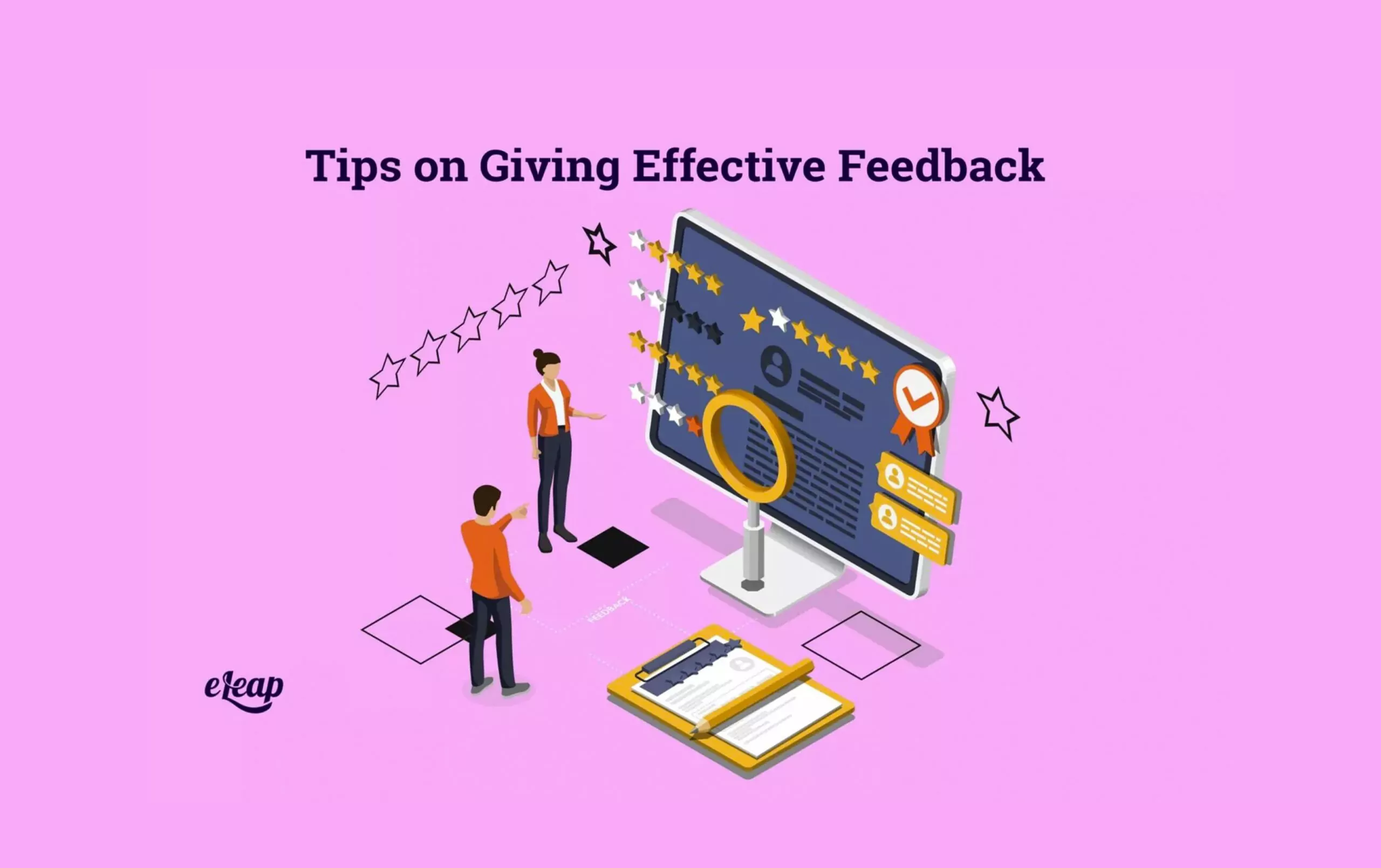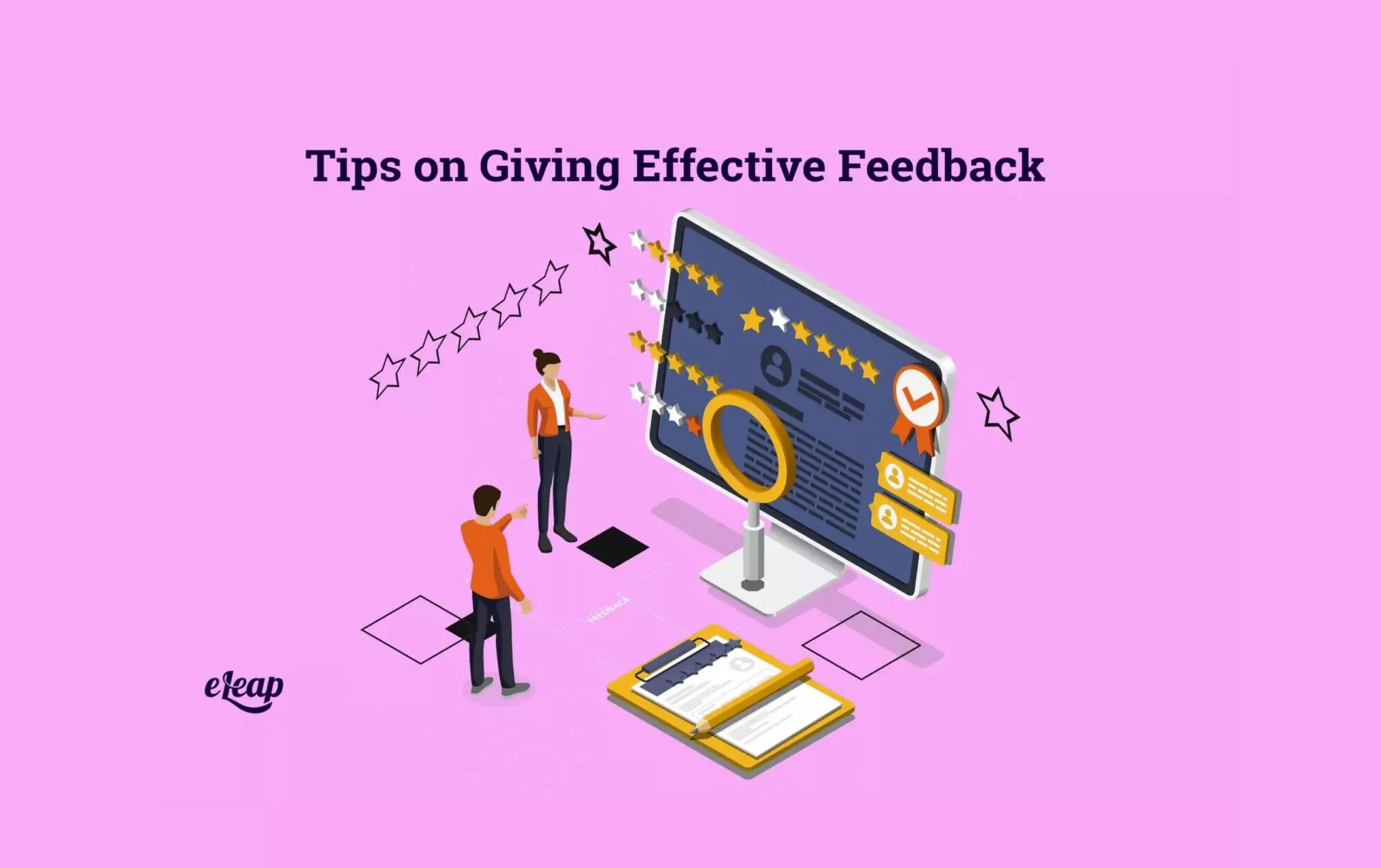Tips on Giving Effective Feedback

As a leader, it’s crucial to give your employees effective feedback every time you work with them. When you’re giving great feedback, it will help to grow and develop your employee into a stronger, more motivated worker. Of course, making sure your feedback is worthwhile can be easier said than done.

Types of Feedback
In order to understand what effective feedback looks like, it’s important to know what the most common types of feedback are. Almost every piece of feedback given in the workplace is typically put into one of four categories.
These categories are:
- Directive: Regardless of tone, this feedback gives orders on what the employee should do.
- Contingency: This style of feedback threatens a consequence if the employee doesn’t change the action.
- Attribution: With this category, you put a label on the employee or their actions.
- Impact: The final category explains the effect that an employee’s actions are having on the team as a whole.
It’s likely you’ve given all four types of feedback at one point or another. However, not all types are effective. The most effective feedback style is impact feedback. While there may be a time or place for the other styles, almost every employee will show improvement when given impact feedback first.
How to Give Effective Feedback
Now that you know what the best style of feedback is, you may be wondering how to become a leader who gives feedback in that way. While every member of your team is likely to respond to feedback in different ways, there are some tips that should help you navigate all feedback sessions!
Give Feedback One-On-One
It’s never a good idea to give feedback in a public setting, especially if the feedback is more constructive and less praise. When it’s time for a feedback session, you should schedule it to be in person whenever you can, or at least over video chat if it must be virtual.
Make the session as informal as you can. Some leaders like to do feedback sessions in their office, while others prefer to keep it in a more neutral location, such as an open conference room or even a next-door coffee shop. Whichever location you choose, make sure there aren’t other team members around and that it doesn’t come across as intimidating to your employee.
Be Aware of Your Tone and How You Deliver Feedback
How you say the feedback you’re giving is just as important as the content you’re portraying. Make sure your feedback has the right tone and delivery to portray the right message.
It’s best to start your constructive feedback sessions with something positive. Letting your employee know something they’re doing well will help them relax, knowing that your feedback session isn’t just a bashing session. You can also use the opportunity to help showcase what your expectations are at work by highlighting areas where your employee meets or exceeds them.
From there, make sure you be clear on what the issue at hand is. Being as specific as possible about the concern and why it’s a concern can give your employee a better understanding of why they need to focus on improving in the area. When possible, bring up recent examples or specific data that back up your concerns.
It’s also important to make sure your employee knows you’re giving them feedback because you want them to grow. When you approach constructive feedback with growth as the emphasis, it can keep the employee from feeling like you’re simply attacking them or a trait they may have.
Only Highlight One or Two Concerns Per Session
Even if your employee needs to improve in many different areas, effective feedback will only focus on one or two areas at a time. If you bombard your employee with a ton of areas where they aren’t meeting expectations, you can cause confusion or even a complete shutdown from them.
Give your employee one or two areas that need the most immediate correction to begin with. Taking this approach can help lessen the negative impact your employee may be having on their team while they’re working on improving. As they meet the initial goals you’ve given them, you can gradually give them more areas to focus on until they’re all addressed.
Make the Session Include Dialogue
The best way to help your employee put in the work needed to improve in an area is to let them be part of creating the solution. While you may have a perfect solution in your head, it may not work for one employee as it has for another.
Start by giving your employee an understanding of the effect their actions have on their team, so they see why it’s important. From there, you can give suggestions on how they can work on improving in the area. As you give suggestions, ask your employee how they feel about the suggestions. They may love a suggestion you offer or have a variation that they feel will work better for them.
When you ask your employees how you can help them reach the goals they have, they’ll see that you’re invested in their success. This can make a huge difference because it can be the motivating factor some employees need to improve.
Don’t Forget the Follow Up
While effective feedback is essential, it’s often rendered useless due to a lack of follow-up. Make sure you’re touching base with your employees periodically to see what progress they’ve made in their areas of concern.
When you see that a team member has made improvements or reached their goals, make sure to recognize them for their efforts! The recognition will help your employee feel valued and can help them stay motivated to keep up the great work even when they’ve met their goals!
How NOT to Give Effective Feedback
While it’s crucial to include some helpful elements of feedback in order to make it effective, that’s not all you should consider. There are also some common issues with feedback that can hurt your overall message. If your feedback isn’t given correctly, your employee may shut down and be unwilling to change.
When striving for effective feedback, make sure to avoid these common problems!
Never Focus on the Person – Only the Action
If you word your feedback in a way that judges your employee as a person or traits they may have, they’re likely to shut down. Make sure you’re only bringing up specific actions and avoiding “you are” statements.
Don’t Mention Other People
It’s best to just stick with the data or first-hand experiences you have with your employee when it comes to giving feedback. Don’t mention another employee’s concerns during feedback. This can be confusing for employees and make it seem like you’ve engaged in workplace gossip.
Don’t Assume You Know the Motives Behind the Issues
You may think you know why your employee hasn’t been able to make it to work on time or why their sales aren’t up to standards, but you could be completely wrong. Don’t approach a feedback session with any type of bias. Instead, allow your employee to talk to you about the issues.
It can be helpful to ask questions to get to the root of the issue. While your guess may be correct, it’s always better to let your employee express their reasons than for you to simply assume you know.
Don’t Exaggerate
Your employee may have an ongoing problem at work, but it’s highly unlikely that it’s a concern a hundred percent of the time. Avoid saying words like “always” or “never” in your feedback. Not only are they likely untrue, but it hurts your credibility in the feedback session.
Giving Personal Feedback
It’s important to remember that all of your employees receive and react to feedback in unique ways. When you’re putting together your approach for a feedback session, consider the individual you’ll be speaking to.
A person’s personality trait, home life, and professional background can all play into how they will take the feedback you give them. Before you sit an employee down for a feedback session, make sure you’ve thought about these elements:
- Determine the situation – if your employee is brand new to their position or the company, you’ll likely approach the feedback differently than if you’re talking to a tenured employee.
- Everyone reacts differently. Some employees may need some time to think about their approach for improvement, while others may be eager to offer their ideas. Both are okay, so it’s important to allow both types of employees the time they need.
- Consider what you know about your employee’s life outside of work. If you don’t know anything about it, know they may open up about issues they may be having that are contributing to their work performance.
Takeaway
Effective feedback can help your employees grow and flourish into the team members you need them to be. It’s important to handle every feedback session as its own unique experience so that you tailor them all to each employee. This approach can help you see the best results! The eLeaP continuous performance management system provides organizations with powerful options to attract and retain high caliber team members.